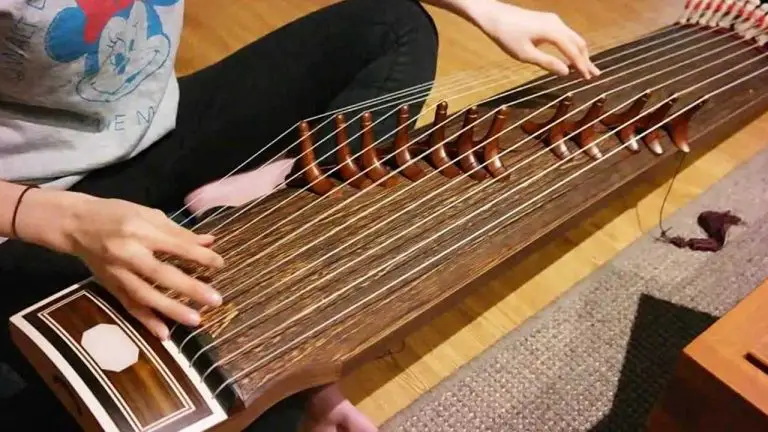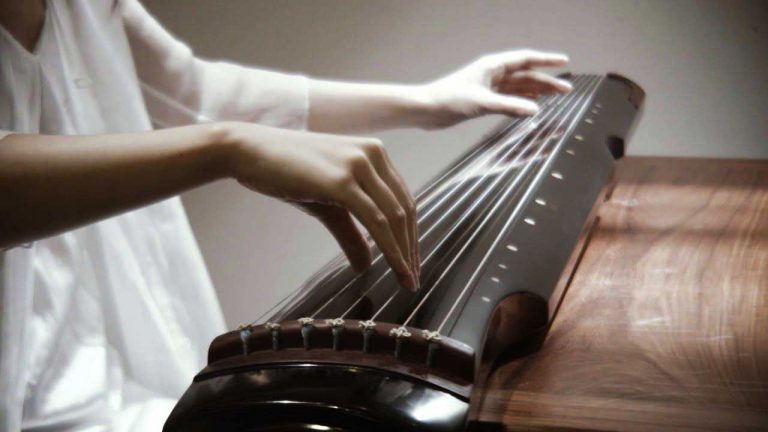Mongolian String Instruments – All You Need to Know
Folkstrings.com is reader-supported. When you buy through links on our site, we may earn a small commission.
Mongolia is home to a wide variety of string instruments, many of which are unique to the region. In this blog post, we’ll explore some of the most popular Mongolian string instruments and learn about their history and cultural significance.
Whether you’re a musician looking for new inspiration or simply curious about the music of this fascinating country, read on to discover more about Mongolian string instruments!
Table of Contents
- What Are the Most Well-Known Mongolian String Instruments?
- What’s the History of Mongolian Folk Music?
- Are Mongolian String Instruments Easy to Learn?
- How to Care for Mongolian String Instruments
- Conclusion
What Are the Most Well-Known Mongolian String Instruments?
Mongolian string instruments are some of the oldest in the world, and perhaps even some of the most beautiful. These instruments are based on traditional nomadic styles, so each type brings a unique sound and technique to music.
Commonly seen across Mongolia is the Morin Khuur, a bowed two-string instrument with an incredibly distinct vibrato sound. It is sometimes referred to as a horse-headed fiddle because of its shape and regality.
Another notable instrument is the Topshur, which has two or three strings – It’s a bowl shaped instrument which is covered in a tight animal skin. The strings can be made of horse hair or sheep intestine – that’s held horizontally on either side of the performer while they pluck away.
Both these instruments create music that will transport you straight into Mongolian culture no matter where you are in the world.
What’s the History of Mongolian Folk Music?
Mongolian folk music dates back as far as the 13th century, with a strong emphasis on cultural and religious singing.
Nomadic herders of the time used vocal music to sing about their love and longing for home, often accompanied by stringed instruments. It was much different from the orchestral style of music popular in other parts of the world at that time.
In recent decades, however, Mongolian folk music has evolved and blended with western styles such as rock and has developed its own unique take on world-music that appeals to modern audiences in Mongolia and around the globe.
Mongolian artists are highly respected for their unique approach to blending traditional distinctness with modern sounds, resulting in an amazing modern interpretation of old-style folk.
The national instrument of Mongolia is called Morin Khuur or “horse head fiddle” which is still a featured prominently; showing just how deeply rooted Mongolian folk music is in this culture.
Are Mongolian String Instruments Easy to Learn?
For those looking to learn a new instrument, Mongolian string instruments may be worth considering. While there can be a certain learning curve at the beginning, more experienced players suggest that there are certain advantages to being able to adapt to the traditional style of playing these stringed instruments.
Not only are they an interesting take on more commonplace instruments like the violin or guitar, but they also offer a unique way of expressing music that draws upon both East Asian and Central Asian tonal characteristics.

For an added sense of adventure, many who learn how to play the mongolian string instruments travel abroad in order to deepen their understanding of their craft and even go as far as performing alongside local musicians for further growth.
How to Care for Mongolian String Instruments
If you’re lucky enough to own a Mongolian string instrument such as the Morin Khuur and the Tovshuur, you have to know that they require special care for optimal performance and overall longevity.
To ensure your instrument is properly cared for, it’s important to keep your instrument in a stable temperature and humid environment; placing desiccants around the instrument can help with this.
Cleaning your instrument on a regular basis is also crucial – using lukewarm water and soap wipe down all hard surfaces of dust particles and oils that accumulate over time.
Additionally, you should check your strings regularly – if they show any signs of damage, you’ll need to restring them as soon as possible.
Finally, don’t forget to take breaks while playing – leaning or pressing against your instrument can cause stress or damages in the long run. With proper maintenance, you’ll be able to enjoy your beloved Mongolian string instruments for years to come!
Conclusion
Mongolian string instruments have a long and varied history that can be traced back to the 13th century. These instruments are still used today in traditional music, and offer a unique sound that is distinct from other stringed instruments.
If you are interested in learning more about these instruments or want to try playing them yourself, be sure to research the best ways to care for them. With a little bit of practice, you can join the ranks of those who have mastered the art of playing mongolian string instruments!
Author Profile
-
Daniel Johnstone is an English writer with a love for stringed instruments from around the world.
He shares his love for these instruments through his writing for folkstrings.com, a website dedicated to all things related to folk string music.
Daniel's passion for music started at a young age, and he has since become an accomplished musician, playing guitar, cavaco, and recently, the harp.
His dedication to learning and sharing his knowledge of stringed instruments is evident in his insightful and engaging blog posts. Whether you're a seasoned musician or a beginner, Daniel's writing is sure to inspire and entertain you.
When he's not playing music or writing, you can find Daniel exploring new instruments and seeking out new sounds to share with his readers.
Latest entries
 AutoharpApril 4, 2024What Is the Autoharp Made Of: Exploring Its Materials and Craftsmanship
AutoharpApril 4, 2024What Is the Autoharp Made Of: Exploring Its Materials and Craftsmanship AutoharpApril 4, 2024Is Autoharp Easy to Play? Unveiling the Truth for Beginners
AutoharpApril 4, 2024Is Autoharp Easy to Play? Unveiling the Truth for Beginners AutoharpApril 4, 2024What Is an Autoharp Worth? Your Guide to Pricing and Value
AutoharpApril 4, 2024What Is an Autoharp Worth? Your Guide to Pricing and Value AutoharpApril 4, 2024Are Autoharp and Zither the Same Thing? Unraveling String Instrument Myths
AutoharpApril 4, 2024Are Autoharp and Zither the Same Thing? Unraveling String Instrument Myths
Affiliates:
This post may contain affiliate links that at no additional cost to you, the site may earn a small commission. We only recommend products we would use ourselves and all opinions expressed on this site are our own.
Accuracy Advice:
While we strive to provide up-to-date and accurate information, the content in this article may not reflect the most current research or medical guidelines. We encourage readers to do further research and consult with professionals for more personalized advice.
Our Recommendations:
The products and services mentioned in any of our articles are recommended based on our independent research and personal experience. We are not sponsored by any company. We aim to suggest products and services we believe are of high quality and could be beneficial to our readers.







